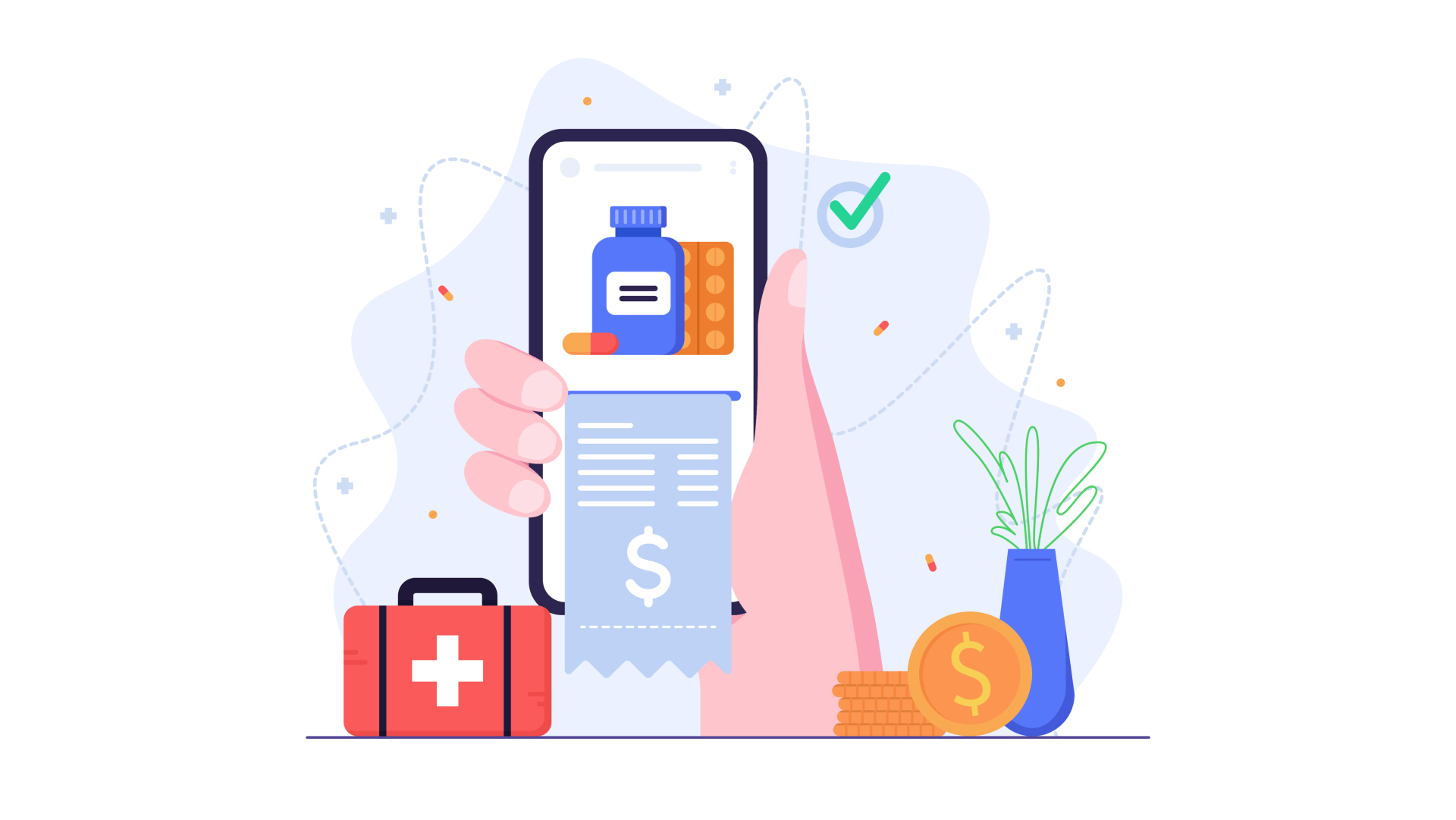Imagine pouring $500,000 into building a cutting-edge healthcare app — only to realize a year later that it barely moved the needle on revenue, patient outcomes, or operational efficiency. A 2023 Rock Health report found that over 42% of digital health startups struggle to demonstrate clear ROI to investors and stakeholders, often leading to funding challenges or product pivots.
In healthcare, success is about proving measurable value — not showcasing sleek user interfaces or clinical validation milestones. Without a clear grasp of ROI (Return on Investment), founders risk chasing vanity metrics like downloads or doctor signups, while overlooking the outcomes that investors, payers, and providers care about: cost savings, revenue growth, patient engagement, and retention.
This guide will walk you through a practical framework to calculate ROI for your healthcare app — based on hard numbers that withstand investor scrutiny and drive real-world outcomes.
Why ROI Matters for Healthcare Startups
Launching a healthcare app without tracking ROI is like flying blind. Every dollar spent — whether on product development, compliance, or marketing — needs to translate into tangible outcomes that matter to investors, providers, and patients.
For startups, ROI is not just a financial checkpoint; it’s a survival tool. Venture funding is tightening across digital health, with Q4 2023 investments dropping by 41% compared to the previous year. Startups that can clearly show how their solutions reduce costs, improve patient outcomes, or unlock new revenue streams will outcompete those relying on anecdotal success stories.
Ignoring ROI also creates operational blind spots. Without it, founders can’t tell if user acquisition is profitable, if patient retention strategies are working, or if partnerships are yielding more than they cost. Over time, these gaps pile up — turning promising healthcare apps into expensive experiments rather than scalable businesses.
Steps to Calculate ROI of Healthcare Apps
Define Clear Objectives and Success Metrics
Before calculating ROI, you need to be clear about what “success” means for your healthcare app. Are you aiming to increase patient adherence? Generate subscription revenue? Reduce hospital readmission rates?
Establish specific, measurable goals tied to financial and operational outcomes. Examples include:
- Reducing administrative costs by 15% within 12 months.
- Achieving $100,000 in subscription revenue by Q4.
- Cutting patient onboarding time by 30%.
Define Key Performance Indicators (KPIs) that map directly to these goals. Without sharp metrics, ROI calculations will collapse into guesswork.
Identify and Calculate Total Costs
You can’t measure returns if you don’t know your investment. Calculate the full cost of developing, launching, and maintaining your app. Break costs into categories:
- Development: design, coding, APIs, integrations.
- Compliance: HIPAA certification, audits, legal fees.
- Operations: server costs, customer support, maintenance updates.
- Marketing: campaigns, partnerships, app store optimization.
Include hidden costs like user training, cybersecurity measures, and third-party licensing. Skipping these will inflate your ROI on paper and lead to bad decisions later.
Forecast All Potential Financial Benefits
List all revenue streams and cost savings your app will generate:
- Direct revenue: subscriptions, licensing deals, white-label partnerships.
- Indirect savings: reduced hospital staff workload, lower call center volume, minimized patient no-shows.
Estimate conservative, realistic numbers. Forecast quarterly or annually, depending on your business model. It’s better to underpromise and outperform than to overestimate and lose credibility with investors.
Quantify Non-Financial Outcomes (Optional but Recommended)
Non-monetary outcomes like improved patient satisfaction, clinical efficiency, or reduced medical errors can and should be factored into ROI — but only if you can assign a financial value.
For example:
- A 10% improvement in patient adherence may reduce hospitalizations, saving $500,000 annually.
- Shorter appointment wait times could increase patient retention, which in turn increases lifetime revenue per patient.
Quantifying soft benefits gives a fuller, more strategic view of your app’s value proposition.
Apply the Standard ROI Formula
Now, apply the classic ROI formula:
ROI (%) = ((Total Benefits – Total Costs) ÷ Total Costs) × 100
For Example:
If your app generates $300,000 in benefits and cost $150,000 to build and maintain:
ROI = ((300,000 – 150,000) ÷ 150,000) × 100 = 100%
A 100% ROI means you earned back your entire investment and doubled it — a strong signal for investors and strategic partners.
Analyze Payback Period and Break-Even Point
ROI tells you the “how much,” but stakeholders also want to know “how fast.”
- Payback Period: How long it takes to recover the initial investment
- Break-Even Point: When cumulative profits exceed total costs
Shorter payback periods are more attractive, especially in a volatile funding environment. If your app’s payback period is five years, it may need stronger revenue strategies or cost optimizations.
Set Up Ongoing ROI Tracking and Optimization
ROI isn’t a one-time calculation. Set up dashboards and analytics systems that track KPIs, user behavior, and cost-benefit changes over time.
Use tools like:
- Google Analytics (for web and mobile usage)
- Mixpanel or Amplitude (for behavior analytics)
- Financial dashboards (for real-time cost tracking)
Regularly reviewing ROI helps spot issues early and adjust course — whether that’s reallocating marketing spend, refining user flows, or renegotiating vendor contracts.
Conclusion
Calculating ROI for a healthcare app forces founders to confront whether their product is financially sustainable. Strong ROI shows that the app creates measurable value by generating revenue, reducing costs, or improving patient outcomes. Weak or unclear ROI points to problems in acquisition costs, pricing strategy, or market fit that will only worsen over time.
Tracking ROI is not a final step. It is a way to measure if your decisions are moving the business closer to profitability or further away from it. Founders who monitor ROI early are better positioned to secure funding, build stronger partnerships, and grow with fewer expensive mistakes.
FAQs
What is a good ROI percentage for healthcare apps?
Most healthcare investors and stakeholders expect a minimum ROI of 30% to 50% within 18–24 months. High-performing apps — especially those targeting payers, hospitals, or large provider networks — often aim for 100% or higher to stay competitive.
How long does it typically take to achieve ROI for a healthcare app?
For well-planned healthcare apps, ROI is typically achieved within 12 to 24 months after launch. Complex apps involving enterprise sales cycles (like hospital systems) may take up to 36 months. Shorter payback periods are a major advantage during fundraising and partnership negotiations.
Can non-monetary benefits be included in ROI calculations?
Yes, but only if they are quantified in financial terms. Examples include:
- Reductions in hospital readmission rates (saving costs).
- Improved patient retention (increasing lifetime value).
- Shortened provider onboarding time (saving operational expenses).
Quantifying non-financial outcomes strengthens your ROI narrative without making it speculative.
What are the biggest mistakes startups make when calculating ROI?
Common mistakes include:
- Underestimating hidden costs like compliance, customer support, or infrastructure.
- Overestimating revenue projections without market validation.
- Ignoring non-financial outcomes that could significantly influence the app’s strategic value.
- Failing to track ongoing KPIs after the launch.
Each of these can distort the true ROI picture and hurt credibility with investors or partners.
What tools can help track and optimize ROI for healthcare apps?
Top tools for ROI tracking include:
- Google Analytics (GA4): For real-time usage and conversion metrics.
- Mixpanel or Amplitude: For detailed user behavior and retention analysis.
- QuickBooks or Xero: For financial tracking and cash flow management.




